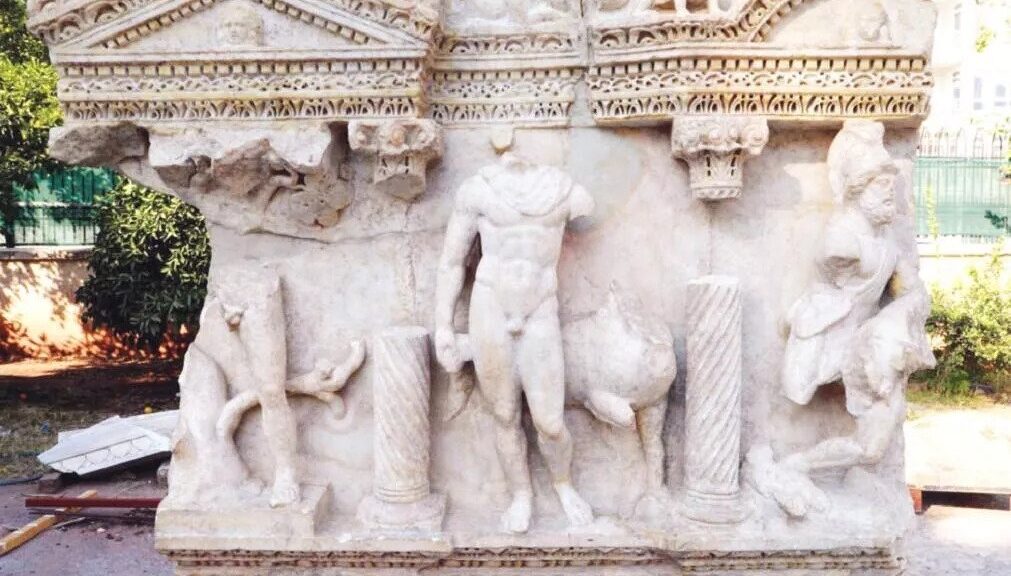U.S. Repatriates Looted Artifacts to Turkey

The items of unique historical heritage, including the human-sized bronze statue of the Roman Emperor Lucius Verus and the columnar sarcophagus fragments from the ancient city of Perge in Antalya, have been returned to Türkiye from the United States.
Six artefacts, including nine pieces, which were taken from two different auction houses and a collector in the U.S., were taken under protection in the Antalya Museum.
The artefacts, which were returned to the county on Oct. 22, were introduced yesterday at a ceremony attended by the Culture and Tourism Minister Mehmet Nuri Ersoy.
The historical artefacts, which were illegally taken abroad from Anatolia, were returned to Türkiye as a result of the joint efforts of the Culture and Tourism Ministry, the Antalya and Burdur Museum Directorates, the Manhattan District Attorney’s Office and the U.S. Office of the Director of National Intelligence.
Based on the work of Türkiye’s first female archaeologist, the late Professor Jale İnan, and the information provided by journalist and writer Özgen Acar, the ministry prepared a file for the return of the historical artefacts.
Examinations have been made in the archival and international publications and interviews were also made with the witnesses. Professor Ramazan Özgan and Professor Ertekin Doksanaltı made scientific reports.
The results of the examinations and the reports were sent to the Manhattan District Attorney’s Office and the U.S. Office of the Director of National Intelligence.
Finally, the human-sized bronze statue of the Roman Emperor Lucius Verus, which was taken out of the country from the ancient city of Bubon in the southern province of Burdur, and the four-piece Roman-era sarcophagus originating from the ancient city of Perge in Antalya were returned.
The statue of Verus is one of the rare human-sized bronze statues that have survived to the present day.
The fact that many of the ancient bronze cast statues were melted and used for various purposes gives the statue of the emperor special importance.
Again, during the examinations, an early Bronze-Age marble Kusura-type idol, which was one of the schematized female figures common in Western Anatolia in the third B.C. and mentioned in both Greek and Roman mythology, and a silver figurine of Apollo from the northern province of Balıkesir that have been smuggled out of the country was found at an auction house in the U.S.
Also, a sitting Attis statuette and a terracotta earth plate from the ancient city of Pisidia Antiokheia of Isparta were found in another auction house.
The sale of four works that were determined to be smuggled from Anatolia was stopped. In total, six artefacts of nine pieces were returned to their homeland.
